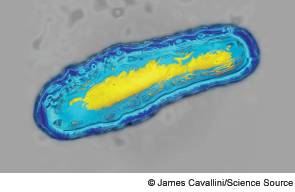
The Case
“Hey, Doc, we got a possible stroke going into room 9.”
The EMS team arrived.”
“Hey, guys, what time did it start?” I said.
“We got a call about 45 minutes ago: 82-year-old male with trouble speaking and weakness since yesterday,” an EMT responded.
“Hi, sir. I’m Dr. Hodson. What brings you in today?”
Explore This Issue
ACEP Now: Vol 33 – No 10 – October 2014The patient looked up at me and cupped his ear, then said, “I’m just a little weak is all. They worry about me being at home.” He pointed to his daughter and son-in-law, who were standing in the doorway.
“His wife is in the hospital here, too—my mother, that is,” said the daughter. “They think she had a stroke two days ago, and now he’s not acting himself either.”
No obvious slurred speech. Occasionally a hard consonant was lost, but there was no aphasia, maybe a mild dysarthria. It was difficult to tell without a prior examination, but something was definitely off. The patient’s gesticulations seemed wrong, something in the way he was moving his hands.
I tuned back into the meat of their conversation. “We’re just worried he had a stroke, like my mother did,” the daughter said. “They put her in the ICU today. Her swallowing got worse, but they say her CT scan and MRI look OK. They’re talking about doing a spinal tap on her to see what’s going on.”
Somewhere in the back of my head, a quiet alarm started to sound.
The gentleman was in his early 80s, thin, calm, and sitting up on the exam room stretcher. I watched him get off the EMS stretcher and walk to it and pace about the room for a minute when talking to his daughter. His gait looked good, without dramatic ataxia.
His history was largely unremarkable. He reported a day or so of gradually progressive slurred speech and a diffuse, vague weakness. I asked him to clarify what he meant and learned he was having trouble opening cans of food and felt somewhat weak, like his legs might give out, and that his eyes felt weak, like he couldn’t focus them at a distance.
The alarm in my head grew louder. Diffuse weakness, more of the distal and smaller muscles. Eyes, tongue, fingers this didn’t sound like stroke; this sounded peripheral. I had seen this before, years ago—but what and where?
The rest of the history was remarkable for hypertension, non-insulin-dependent diabetes, gastroesophageal reflux, osteoporosis, mild dementia, and a prior cerebrovascular aneurysm that was clipped, as well as a VP-shunt. The family was unsure why the shunt had been placed and later removed.
The patient asked me for a cup to spit into. “I’m having trouble swallowing my spit real good today,” he said. “I’m sure it’s nothing. I’m not throwing up yet either, but if you had something for nausea, I’d take it.” I paused again. The alarm had turned into a Klaxon. Difficulty swallowing with a sudden onset in relation to neurologic complaints usually doesn’t go into the “benign” folder in my brain. Heart, lungs, and stomach all seemed unremarkable. Neurologic is where the answer lay, but central or peripheral?
No dysdiadochokinesia. No ataxia. Good gait. Plantar flexion and dorsiflexion seemed weak. Patellar, Achilles, and Babinski seemed normal. Bicep and tricep reflexes seemed diminished. Grip strength was poor, but bicep and tricep strength felt all right. Tongue wasn’t deviated, but speech was “different” according to the family. Eyes were normal individually, diplopia was present. No matter where I went or where he looked, he saw double. This was interesting.
Form took shape, observations started rolling together.
Peripheral. Small muscles. Diffuse. Ocular. Tongue. Nausea. Someone else in the house with something similar—the cogs aligned.
I whispered an expletive under my breath. “Do you and your wife can food?” I asked.
“Eh, I don’t know. I just eat it. She makes good pasta sauce,” he said. I turned toward the family and tried again a bit more specifically. “Does your mom grow tomatoes, cook them into sauce, and then can the pasta sauce?”
“Oh, yeah, spaghetti sauce—they do that all the time! Why?”
“Because I’m pretty sure that they have botulism!”
The alarm in my head grew louder. Diffuse weakness, more of the distal and smaller muscles. Eyes, tongue, fingers this didn’t sound like stroke.
The Facts
Foodborne botulism is a rare clinical entity, with about 1.25 cases per 10 million people annually.1 It frequently affects a single individual, as reported in 70 percent of cases from 1975 to 1988, but averages 2.7 cases per outbreak.2 In 2012, 25 cases were reported to the Centers for Disease Control and Prevention (CDC), with four outbreaks with more than one individual and one death.3 The botulinum toxin is frequently cited as the most potent known toxin, with a LD50 of 1μg/kg, and works by inhibiting release of acetylcholine from autonomic and presynaptic motor nerves.4,5 Most cases in adults result from ingestion of the toxin, whereas infantile and wound botulism are due to the ingestion or infiltration of toxin-forming spores. There are seven separate types of botulinum toxin: types A, B, C, D, E, F, and G. Types A, B, E, F, and G are absorbed from the gastrointestinal tract, and most cases are secondary to types A, B, and E. Type A is usually found west of the Mississippi River, type B east of the Mississippi (in the Allegheny Mountains particularly), and type E in the Pacific Northwest and Great Lakes states.6-8

Diagnosis and Treatment
Presentation is usually 12–24 hours after ingestion and starts with gastrointestinal complaints of nausea, vomiting, and distention. Gradually, neurologic symptoms follow, with bulbar symptoms (CN IX, X, XI and XII), diplopia, and bilateral symmetric descending paralysis from cranial nerves to limbs. Frequently, pupillary mydriasis and ptosis are observed.4 Forty to 70 percent of affected individuals require intubation for respiratory muscle paralysis.1 Mentation and sensation remain normal, and cardiovascular effects are rarely seen until respiratory compromise occurs.
Botulism is commonly confused with the Miller Fisher variant of Guillain-Barré syndrome, but differential diagnosis should include poisoning by aminoglycoside, anticholinergics, carbon monoxide, diphtheria, organophosphates, or thallium, as well as myasthenia gravis, Guillain-Barré, inflammatory neuropathies or myelopathies, stroke, tetanus, or tick paralysis.4
Diagnosis is clinical until botulinum toxin can be detected in serum, stool, or food samples. Tensilon testing and electromyography (EMG) are normal early on, though motor response to EMG testing will be diminished gradually but conduction velocity will remain unimpaired. Samples of stool, blood, gastric contents, vomitus, and foods should be checked for both C. Botulinum spores and toxin. Physicians should contact the CDC at 770-488-7100 if botulism is suspected.
Presentation is usually 12–24 hours after ingestion and starts with gastrointestinal complaints of nausea, vomiting, and distention. Gradually, neurologic symptoms follow, with diplopia and bilateral symmetric descending paralysis from cranial nerves to limbs. Frequently, pupillary mydriasis and ptosis are observed.
Management is supportive, particularly of the respiratory system, as intubation is required in at least 40 percent of individuals.1 A trivalent antitoxin is no longer available, but bivalent (types A and B) and monovalent (type E) antitoxins are.4 One should bear in mind that the antitoxins are equine-derived, so the usual serum sickness precautions remain. Both are obtained on a named-patient basis from one of the nine CDC regional centers. Usually, they are flown to the nearest airport, and a courier service hand-delivers them directly to you. The CDC coordinates the vast majority of this once they have the patient’s name and know that you suspect botulism.
Many patients have long-lasting side effects years after diagnosis, especially in perceived strength and respiratory fitness.9 Most patients return to near baseline function within several months to a year.
“There are old home canners, and there are bold home canners, but there are no old, bold home canners.”

Color-enhanced transmission electron micrograph (TEM) of Clostridium botulinum. C. botulinum grows in badly preserved canned foods, notably meat and fish, and produces the potent exotoxin that causes botulism poisoning. The toxin affects the central nervous system of humans; in fatal cases death results from heart and lung failure due to malfunctions in the cardiac and respiratory centers of the brain. Magnifcation 50,000x at 10 cm.
Case Resolution
The patient’s primary care physician, who had admitted the patient’s wife, was contacted, as were infectious disease and neurology. Once I mentioned the word “botulism,” their response was dramatically prompt. I had, oddly enough, seen an entire family with an outbreak in medical school and had the experience of calling the state defense lab and the CDC to coordinate delivery of the antitoxin. The statistical likelihood of seeing two independent outbreaks of botulism in my career is something I leave to the statisticians (back-of-the-napkin math puts it around 4*1013:1).
Serum and stool tested negative for botulinum toxin, but several jars of canned spaghetti sauce with peas and meat, tested positive for high levels of botulinum toxin A and B. Labs were unremarkable for both patients initially, as were imaging studies (CT, MRI) and lumbar puncture.
My patient avoided intubation and is still recovering slowly several months out but doing well. His wife was eventually intubated and had a prolonged ICU course, requiring tracheostomy and percutaneous endoscopic gastrostomy tube placement. She has been oscillating between the nursing home and the hospital for respiratory issues and recurrent pneumonia.
Dr. Hodson is an attending physician at Albany Memorial Hospital, Emergency Medicine Physicians, in Albany, New York.
References
- MacDonald KL, Cohen ML, Blake PA. The changing epidemiology of adult botulism in the United States. Am J Epidemiol. 1986;124:794-799.
- Woodruff BA, Griffin PM, McCroskey LM, et al. Clinical and laboratory comparison of botulism form toxin Types A, B, E, in the United States 1975-1988. J Infect Dis. 1992;166:1281-1286.
- Centers for Disease Control and Prevention. Summary of botulism cases reported in 2012. Available at: http://www.cdc.gov/nationalsurveillance/PDFs/Botulism_CSTE_2012.pdf. Accessed August 28, 2014.
- Geyer H. Botulism. In: Nelson LS, Lewin NA, Howland MA, et al, eds.. Goldfrank’s toxicological emergencies. 9th ed. New York: McGraw-Hill Medical; 2011:682-697.
- Shantz EJ, Johnson EA. Properties and use of botulinum antitoxin and other microbial neurotoxins in medicine. Microbiol Rev. 1992;56:80-99.
- Centers for Disease Control and Prevention. Case definitions for infectious conditions under public health surveillance—recommendations and report. MMWR Morb Mortal Wkly Rep. 1997;46(RR10):1-55.
- MacDonald KL, Spengler RF, Hatheway C, et al. Type A botulism from sauteed onions; clinical and epidemiologic observations. JAMA. 1985;253:1275-1278.
- Smith LDS. The occurrence of Clostridium botulinum and Clostridium tetani in the soil of the United States. Health Lab Sci. 1978;15:74-80.
- Wilcox P, Andofatto G, Fairbain MS, et al. Long-term follow-up of symptoms, pulmonary function, respiratory muscle strength, and exercise performance after botulism. Am Rev Respir Dis. 1989;139:157-163.
Pages: 1 2 3 4 | Multi-Page






No Responses to “Botulism Poisoning Diagnosed in Patient with Stroke-like Symptoms”